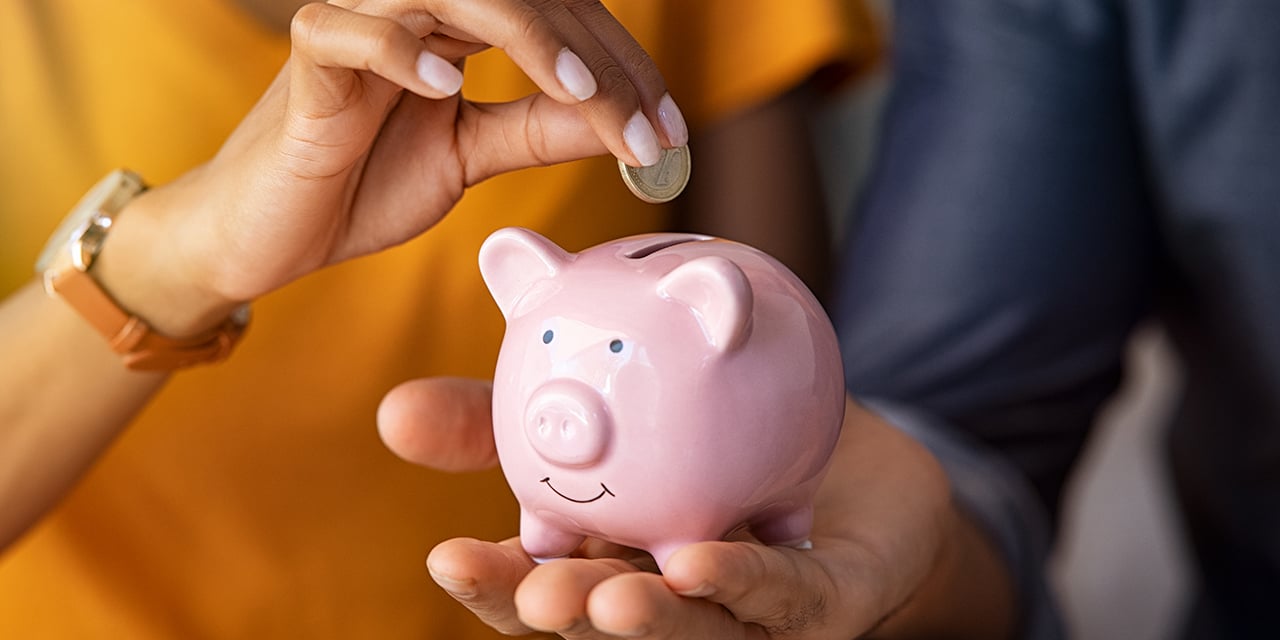
Small Change
Financial planning headlines promising to make you a millionaire sound enticing – until you start reading their recommendations on building your fortune. Underlying most of their wealth-building strategies is an understanding that you have hundreds of dollars to invest every month – and if you’re just starting out, that assumption might not apply to you, especially if you have tens of thousands of dollars in student debt hanging over your head.
One solution is to dramatically alter your lifestyle to save cash – skip the daily Starbucks run in favor of drinking store-bought coffee, or making a lunch at home instead of in a drive-thru. While it’s true a ramen noodle lifestyle can help you save money, that advice only works if you’re willing to stick to it. Instead of making changes to your lifestyle you can’t sustain – or letting the prospect of having to save hundreds every month overwhelm you into doing nothing – let’s look at what small change can do over time.
Don’t Let the Perfect Be the Enemy of the Good
Just because you don’t have lots of money to save or a willingness to make big changes to your spending habits doesn’t mean you should do nothing – because even a little bit, invested over time, can turn into a lot. Let’s take one tiny change – instead of getting a coffeeshop muffin and latte every morning five days per week, you only go four days per week. That’s it – that’s the only change you make. Let’s say that one change saves you $6.25 per week, or roughly $25 per month.
If you were to take that muffin and latte and invested it, over time it can really grow, thanks to the power of compounding. Assuming a pretty conservative 6% return rate, here’s what your muffin and latte would turn into if you invested it instead:
|
If you invested $25 a month, |
Principal | Principal + Compounding |
| …after one year? | $300 | $309 |
| …after five years? | $1,500 | $1,744 |
| …after 10 years? | $3,000 | $4,097 |
| …after 20 years? | $6,000 | $11,551 |
| …after 30 years? | $9,000 | $25,114 |
Table 1. The Growth of Monthly $25 Investments Over Time. The key is time – you really reap the benefits of compounding the longer you stay invested. These results assume a 6% return, compounded monthly. Source: https://www.saving.org/regular-savings/25/month
Now, can you retire on $25,000? Probably not. But let’s peel back the numbers a little more:
- You might look at your one-year return of $9 and feel a little underwhelmed. But break the results down by decade. After the first 10 years, you would have a little more than $4,000. After another 10 years, though, you don’t just double your money – you nearly triple it. Ten years after that, your investment doubles again, and then some. Regardless of if you’re investing $25 a month or $250 or $2,500, there’s nothing that builds wealth like compounding over time. But the longer you wait, the less you’d benefit from compounding. This isn’t something you’ll want to “get around to” someday.
- Changing the data can really boost the results. Instead of forgoing one latte and muffin per week, what if you skipped two? Keeping everything else the same, that $50 per month investment would turn into more than $50,000 after 30 years. If the market returned 7.2%, like it did between 1997 and 2017, your $25 monthly investment would turn into nearly $32,000 after 30 years. Feeling a little bolder? What if you invested $50 per month, with a 7.2% compounding rate, but started at age 25 and kept at it for 40 years? You’d retire with a nest egg worth more than $139,000.
In a way, the numbers are beside the point. The larger takeaway is that these totals are the result of a very small change – bypassing the coffeeshop only one time per week and making no other changes to your lifestyle or additional investments. If you have the $25 investment automatically withdrawn from your paycheck, you probably wouldn’t even notice it. But little changes, applied consistently over time, can make an enormous difference to your financial well-being.
One Last Thought To Consider
While everyone can benefit from compounding, this might not be the best strategy for your particular circumstances. For example, if you have credit card debt, you might be better served paying those off than investing (depending on the interest rate). The same applies if you don’t have an emergency fund, which can keep you from having to turn to credit cards should you suffer a financial mishap. A Baird Financial Advisor can help with your budgeting and set you on a prudent financial path to achieving your financial priorities.


